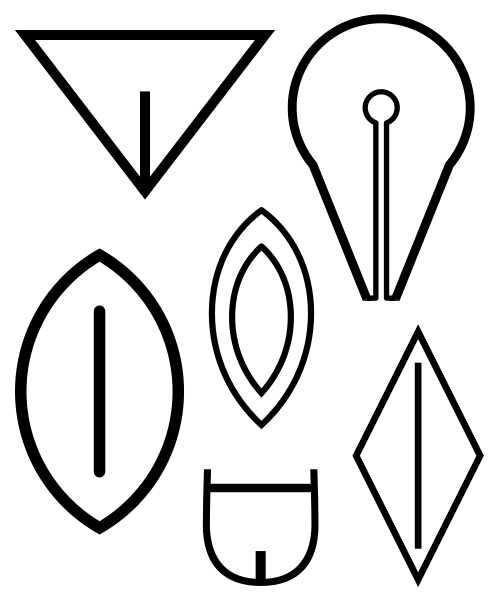Datei:Vulva symbols.svg

Gröössi vor PNG-Vorschou vor SVG-Datei: 500 × 600 Pixel. Wyteri Ufflösige: 200 × 240 Pixel | 400 × 480 Pixel | 640 × 768 Pixel | 853 × 1.024 Pixel | 1.707 × 2.048 Pixel.
Originaldatei (SVG-Datei, Basisgrößi: 500 × 600 Pixel, Dateigrößi: 3 KB)
Dateiversione
Klick uf e Zytpunkt zu aazeige, wie s dert usgsäh het.
| Version vom | Vorschaubild | Mäß | Benutzer | Kommentar | |
|---|---|---|---|---|---|
| aktuell | 05:20, 24. Sep. 2022 |  | 500 × 600 (3 KB) | Smasongarrison | slimmed down with svgomg // Editing SVG source code using c:User:Rillke/SVGedit.js |
| 07:51, 5. Apr. 2017 |  | 500 × 600 (4 KB) | AnonMoos | Reverted to version as of 11:32, 2 September 2008 (UTC) | |
| 22:38, 15. Jan. 2017 |  | 938 × 1.125 (108 KB) | JMCC1 | error in egyptian symbol | |
| 13:32, 2. Sep. 2008 |  | 500 × 600 (4 KB) | AnonMoos | tweaking most-recently added symbol for exact symmetry | |
| 00:55, 1. Okt. 2007 |  | 500 × 600 (4 KB) | AnonMoos | adding further symbol | |
| 09:13, 4. Sep. 2007 |  | 500 × 600 (3 KB) | AnonMoos | adding symbol | |
| 22:48, 26. Aug. 2007 |  | 500 × 600 (2 KB) | AnonMoos | Four symbolic representations of external female genitals as they have been used in various historical/cultural contexts: 1) Upper left: A schematized drawing of the pubic triangle; among other things, this is the earliest archaic form of the ancient Sum |
Verwändig vu dr Datei
Di folgende Sytene händ en Link zu dem Bildli:
Wältwyti Dateinutzig
Die andere Wikis bruche die Datei:
- Gebruch uf ca.wikipedia.org
- Gebruch uf cs.wikipedia.org
- Gebruch uf de.wikipedia.org
- Gebruch uf en.wikipedia.org
- Gebruch uf en.wikiquote.org
- Gebruch uf es.wikipedia.org
- Gebruch uf fr.wikipedia.org
- Gebruch uf ja.wikipedia.org
- Gebruch uf pl.wikipedia.org
- Gebruch uf ru.wikipedia.org
- Gebruch uf sv.wikipedia.org
- Gebruch uf uk.wikipedia.org
- Gebruch uf uz.wikipedia.org
- Gebruch uf www.wikidata.org
- Gebruch uf zh.wikipedia.org
